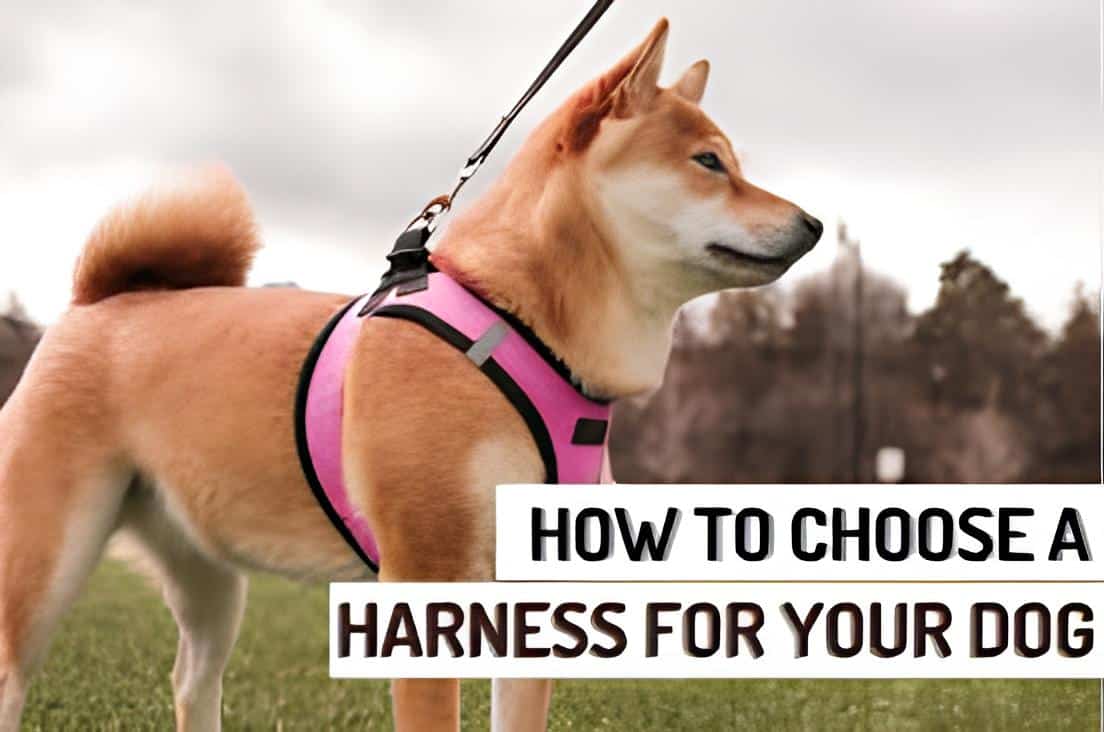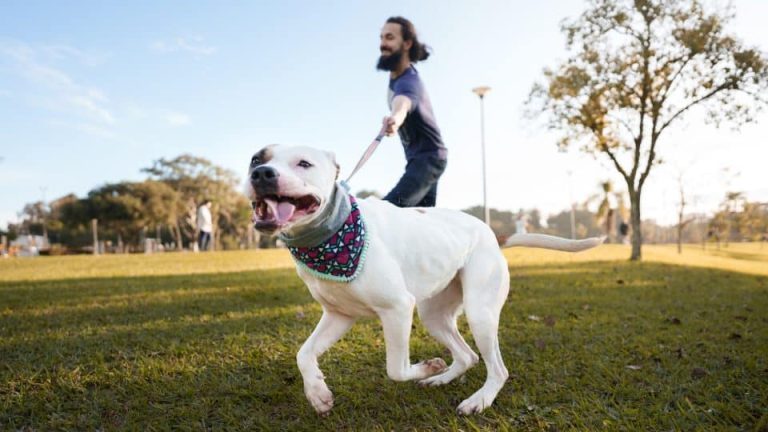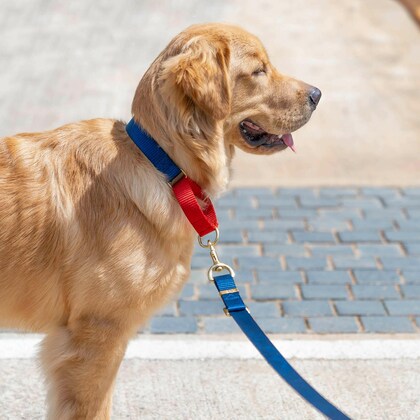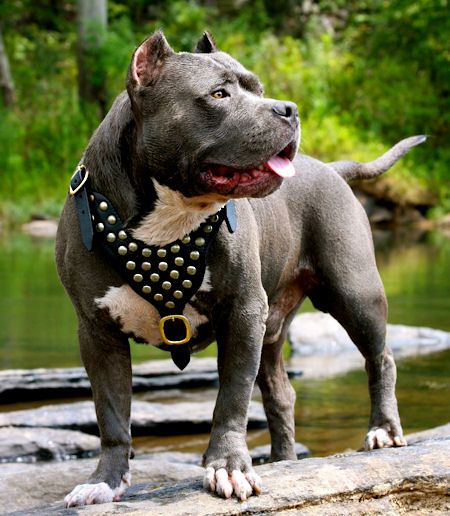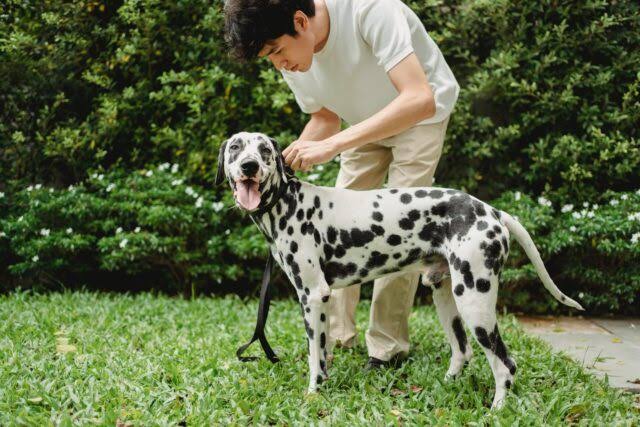What is the Proper Way to Measure a Dog for a Harness?
Choosing the right harness for your pet is essential for their comfort, Safety, and overall well-being. Dogs can be very notorious during walks, And it can be very hard for you to control them in such situations; you need a strong and durable harness to control them.
Harnesses are available in different shapes and sizes. A properly fitted harness ensures your dog is secure during walks, reducing the risk of injury or discomfort. However, the question remains: how to measure a dog for a harness?
Measuring a dog for a harness is not rocket science; however, there are some crucial points that you need to remember while you are measuring your dog. This is because to achieve the perfect fit, it’s crucial to measure your dog accurately.
Thus, in this article, we have mentioned steps on how to measure your dog for a harness and also the importance of it. Tune in to know all of the information in detail.
What is the Difference Between a Collar and a Harness?
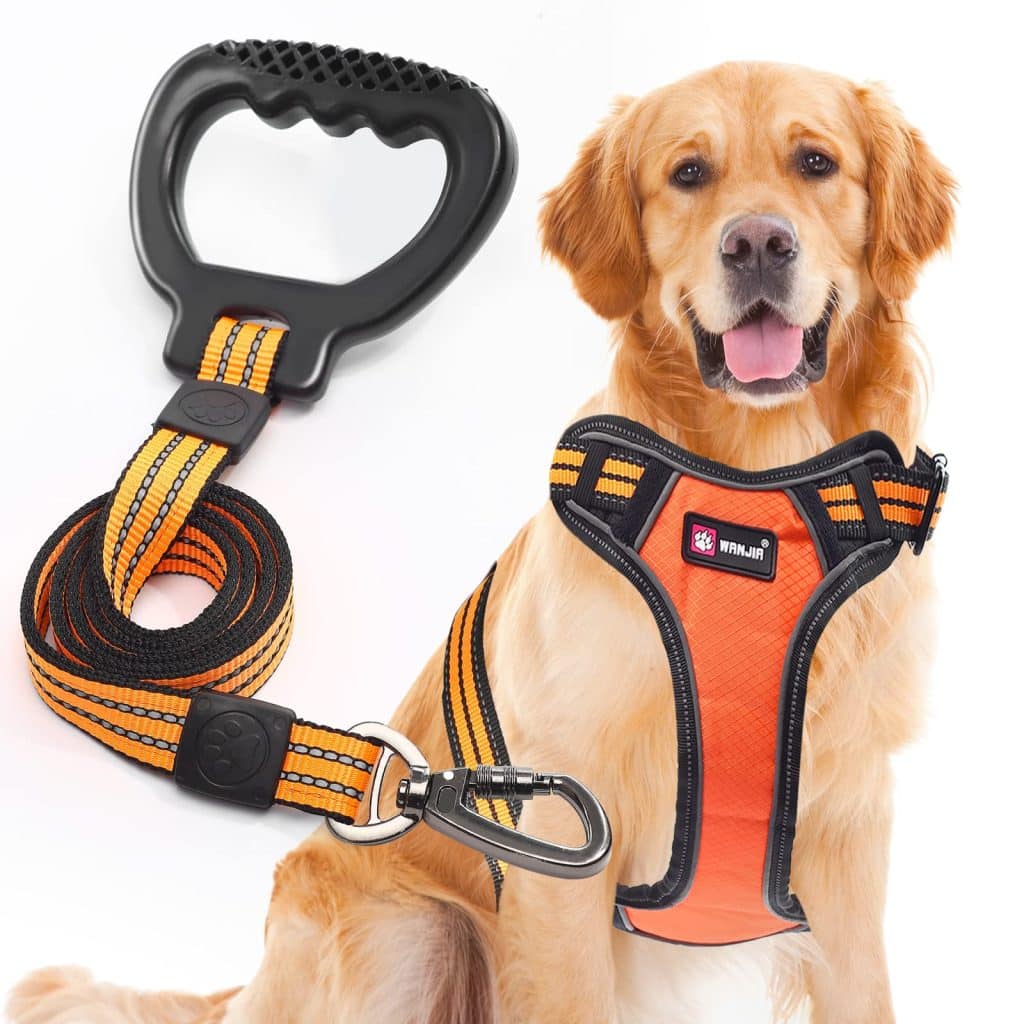
You might also think that the collar and harness are the same. However, the primary difference between a collar and a dog harness is their design and function.
Collars are worn around the dog’s neck and are typically used for attaching identification tags, making them a practical choice for carrying vital information. However, collars can exert pressure on a dog’s neck, potentially leading to discomfort or injury, Especially when the dog pulls on the leash. On the other hand, harnesses are worn around the dog’s chest and sometimes back, providing a more even distribution of force when walking on a leash.
Does the risk of choking make harnesses safer and more comfortable, particularly for dogs that pull on the leash or have respiratory issues? Ultimately, the choice between a collar and a harness depends on the specific needs, behavior, and health of the dog, as well as the owner’s training goals and preferences.
Moreover, the harness functions well only when properly fitted around the dog’s neck and chest; thus, it is important to learn how to measure a dog for a harness.
Step-By-Step Guide: How to Measure a Dog for Harness
It is vital for their overall well-being. An accurately fitted hardness ensures that your dog enjoys walks without any discomfort, and it also provides you the perfect grip to control your dog on the walk-in case they pull.
Thus, it is very necessary to learn how to measure a dog for a harness. Below, we have mentioned a step-by-step guide so that you can measure your dog for a harness to ensure that the harness fits perfectly.
Step 1: Gather the Materials Required
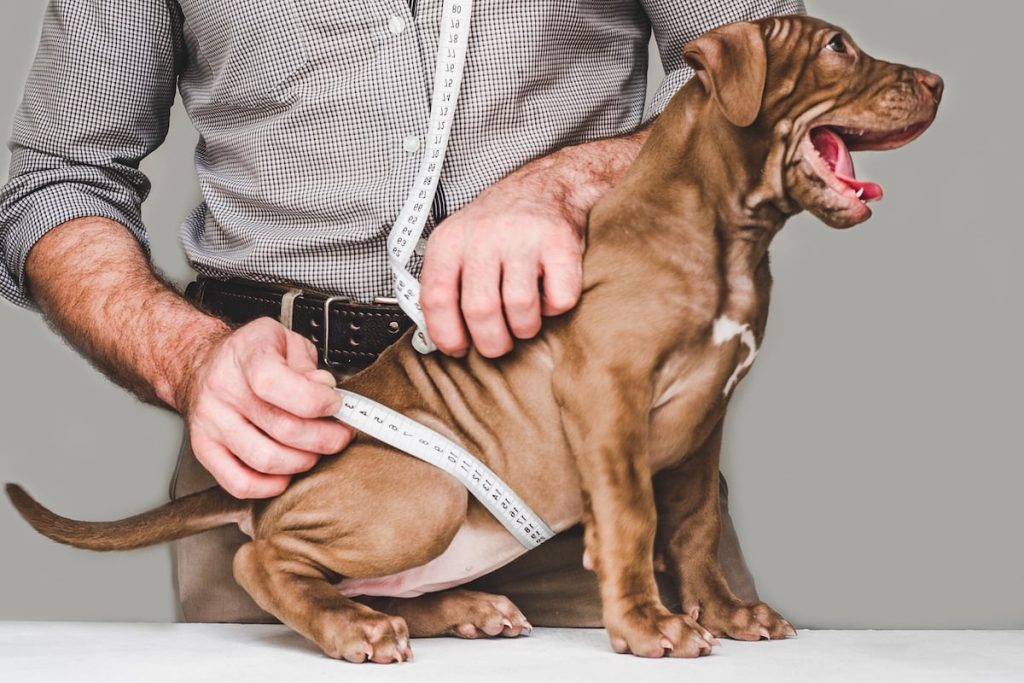
This is the basic step that you need to follow to measure your dog perfectly. You need to assemble all the necessary materials before you start measuring.
- A flexible measuring tape
- a pen
- a notepad or a piece of paper
- a dog
These are some basic things that you need before you start measuring your dog for the harness.
Step 2: Prepare Your Dog
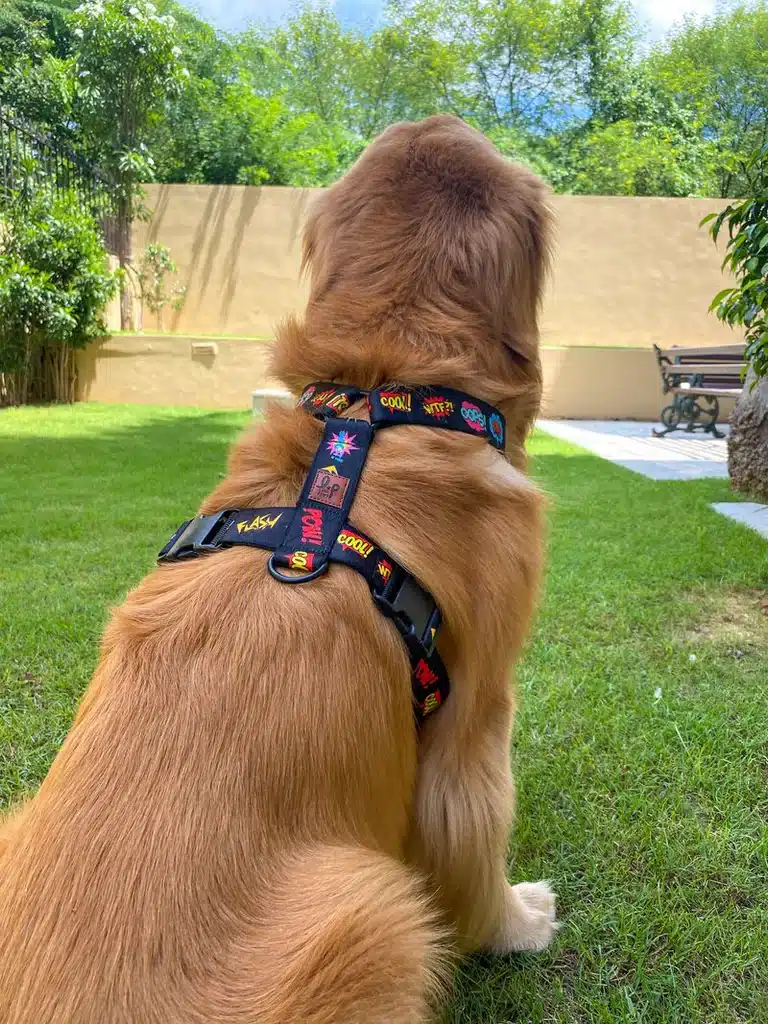
This step might take some time because your dog might feel a little anxious while you’re trying to measure it. Thus, you must be patient and calm him down before measuring him.
Find a quiet, comfortable, and well-lit area for the measurement process. A quiet place to make the dog feel comfortable and a well-lit area because you need to note down the correct measurement for the harness. Also, make sure your dog is relaxed and cooperative. A treat or some positive reinforcement can be helpful to keep them still and calm during the process.
This way, you will prepare your dog to find the right fit for the harness.
Step 3: Measure the Neck Circumference
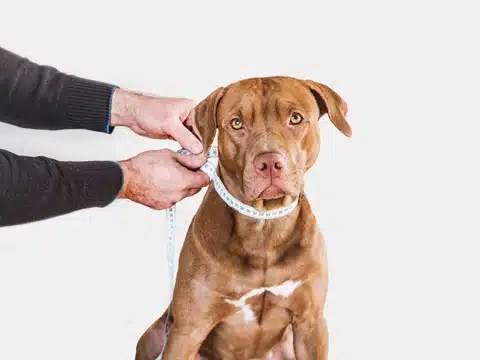
This is an important step because it will decide the proper fit for the harness. Also, you need to note the accurate measurement because if the harness is too tight, your dog might feel uncomfortable. Start by encouraging your dog to stand naturally.
Their neck should be neither too stretched out nor too bunched up. Further, gently wrap the measuring tape around the base of your dog’s neck, where you typically place the collar. You need to ensure that the tape is closely fitted but not tight. You can check this by comfortably sliding two fingers under the tape.
This allows for some extra space and ensures your dog’s comfort. Further, take note of the measurement in inches or centimeters and note it down on a notepad.
Step 4: Measuring the Chest Circumference
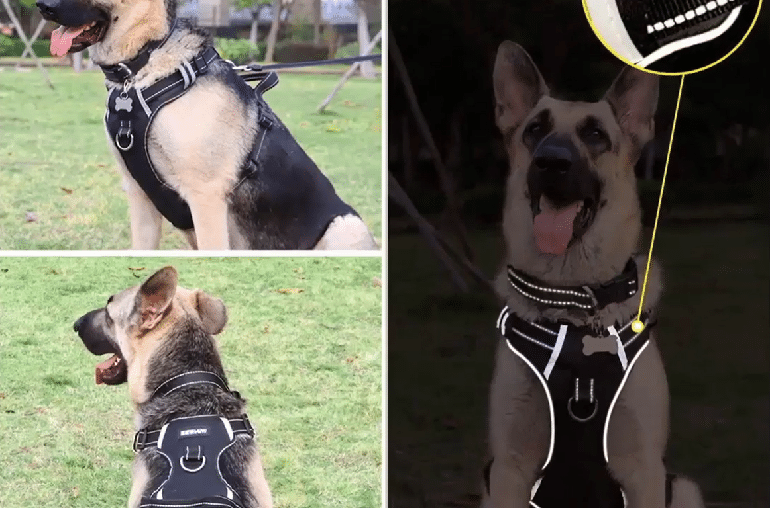
As we mentioned above, a harness is not only for the neck area but also the chest, Which provides enough grip to control the dog. Thus, it is essential to measure the job dog’s chest circumference to choose the right hardness size.
Start by Positioning the measuring tape around the Widest part of your dog’s chest, typically just behind their front leg. Ensure the tape is snug but not tight, as you have done when measuring the neck. Furthermore, you can ensure that the measurement is not too tight after you place two fingers under the tape.
Now, note the measurement in inches or centimeters on the notepad.
Step 5: Measure the Length
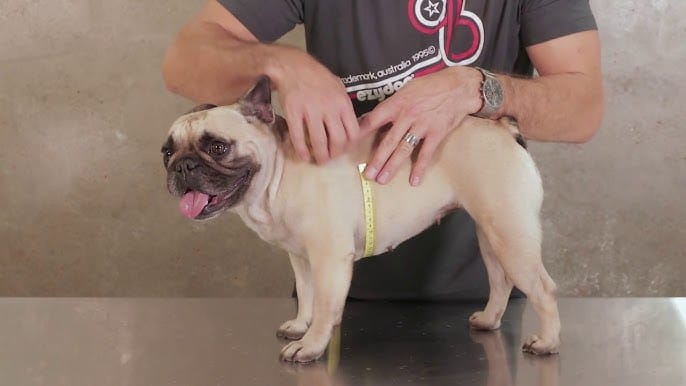
Now, all you need to do is measure the length of your dog, which is essential for ensuring that the harness covers your dog’s entire back. This is also important because it gives proper support to your dog’s back and also helps you to hold your dog properly.
While your dog stands still, measure from the base of their neck to the base of their tail. This will give you the required length of your harness. Check it twice so that you get an accurate measurement.
Furthermore, record it and note it on the notepad.
Step 6: Choosing the Right Harness
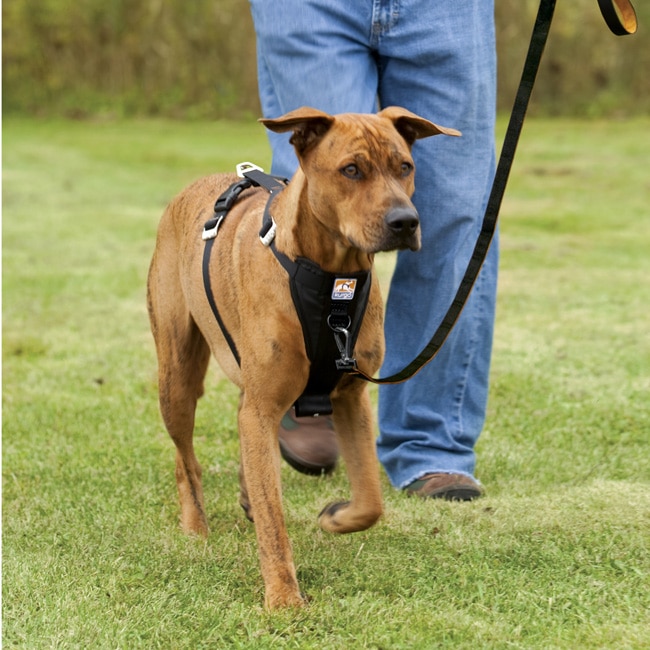
Choosing the right harness is as important as measuring the dog. With your dog’s measurement, you can choose the perfect hardness for them. Different harness styles are designed for various purposes, such as walking, running, or car travel.
It’s essential to consult the manufacturing sizing guide and select a harness corresponding to your dog’s measurements. Remember that some harnesses offer adjustable straps for the most customized fit.
Also, keep in mind that you need to choose the one that is made up of good material so that your dog does not feel uncomfortable while wearing it.
Step 7: Proper Fitting and Adjustment
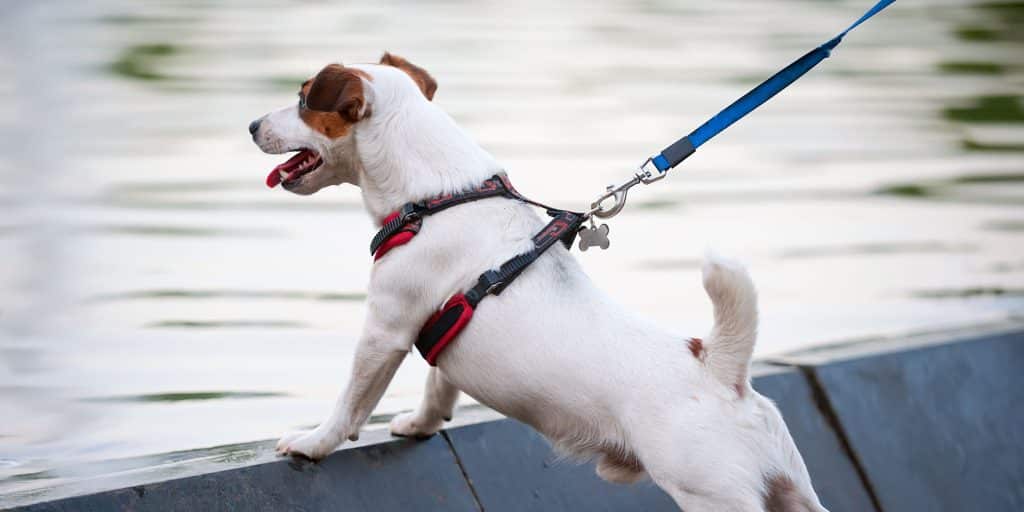
Once you have selected a harness, it’s essential to ensure it fits correctly to your dog. Thus, after your dog is wearing the harness, secure the harness on your dog after following the manufacturer’s instructions.
Make adjustments to the strap to ensure a snug but comfortable fit. The harness should sit securely on your dog without rubbing or restricting movement. Double-check the neck and chest girth measurements to ensure they are accurate. Further, you have to attach the leash to the designated attachment point on the harness so that you can control your dock while you are taking him on a walk.
These are some basic steps that you need to follow to learn how to measure a dog for a harness. By following this step-by-step guide, you will be able to accurately determine your dog’s neck girth, chest girth, and length, enabling you to select the perfect harness.
Tips for Sizing the Dog Harness Accurately
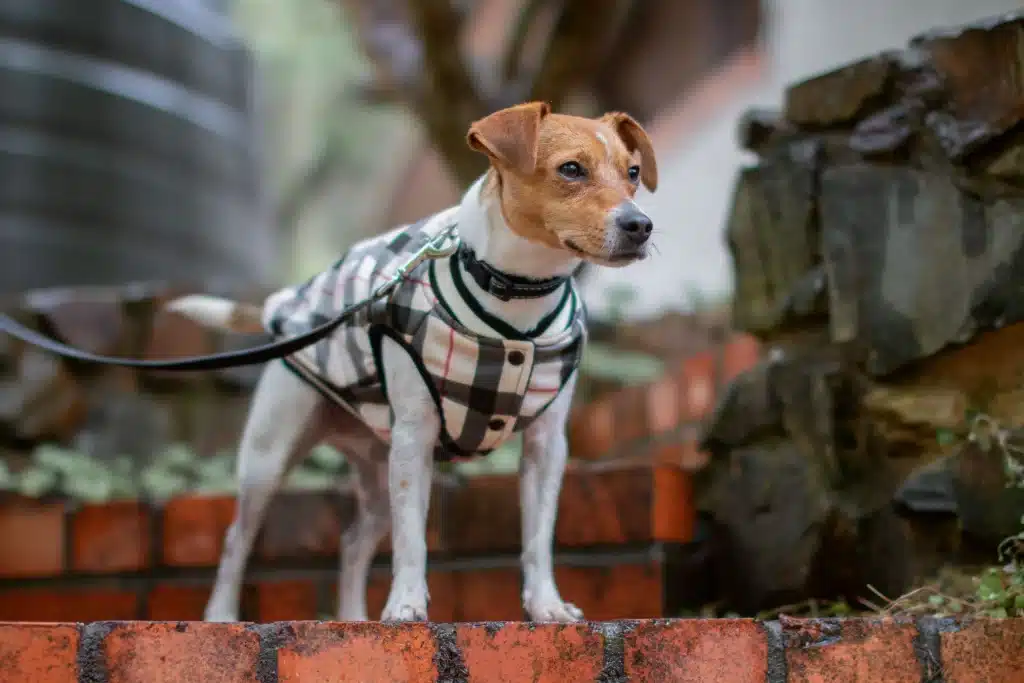
Improper fitting harness can lead to several injuries and discomfort to your dog. Thus, it is really important to find the one that ensures the comfort of your dog. Below are some tips on how to size a harness for a dog.
1. Take Precise Measurements
The first step in selecting the right harness size for your dog is to take accurate measurements. Use a flexible measuring tape to measure your dog’s neck circumference, chest girth, and length.
It’s essential to measure when your dog is standing naturally, neither stretching nor hunching. Ensure the tape is snug but not too tight, allowing you to comfortably slide two fingers underneath and record this measurement for reference.
2. Refer to The Manufacturer’s Sizing Guide
Once you have your dog’s measurements, consult the manufacturer’s sizing guide for the harness you’re interested in. Remember that different brands may have varying sizing charts, so it’s essential to refer to the specific harness you are considering.
The manufacturer’s guide will help you match your dog’s measurements to the appropriate harness size. The right size will also help you to have the proper control of your dog.
3. Consider Your Dog’s Breed and Body Type
There are many dog breeds worldwide, and every breed has different measurements and body types. Thus, some harnesses are designed with specific dog breeds or body types in mind.
For example, sighthounds may require a different type of harness due to their unique body shape. Additionally, puppies may need harnesses that allow for growth and adjustment. Take your dog’s breed and age into account when choosing a harness.
4. Look for Adjustable Features
Opt for a harness with adjustable straps or buckles. This allows you to change the fitting of your harness according to your dog’s requirements or specific measurements. Adjustable harnesses are especially beneficial for puppies or dogs that may experience weight fluctuations.
They are also best for dogs that are in their growing age. You can change the size of your harness according to the growth of your dog. Moreover, the adjustable harnesses are worth investing money in.
5. Consider Your Dog’s Behavior and Needs
Your dog’s behavior and needs can also influence the type of harness you choose. For dogs that pull on the leash, a new pull harness might be a wise choice. Dogs with respiratory issues may benefit from a front clip harness, which avoids pressure on the neck.
For small dogs, a step-in harness can be convenient and secure. Thus, your dog’s behavior and needs are really important when you choose a harness for them, as it is necessary to look for the comfort of your dog.
6. Test the Fit
After selecting a harness size, put it on your dog and make any necessary adjustments. The harness should fit securely but not be too tight or constricting. Ensure that it doesn’t rub or chaff your dog’s skin and that there’s no excessive slag in the straps.
Your dog should be able to move comfortably. Also, check for the material that the harness is made of because the material should be soft, as your dog needs to be wearing this harness for a longer period during walks or other activities.
7. Regularly Check the Fit
The food check is not only a one-time job as your dog grows, or if the experience weight changes, you need to check the fit of the harness. Periodically check the Straps and adjust them to maintain a proper fit.
A well-fitted harness ensures your dog’s comfort and safety during all your adventures. Thus, you need to maintain a regular check of the fit of your harness to provide comfort to your dog.
How Should a Dog Harness Fit?
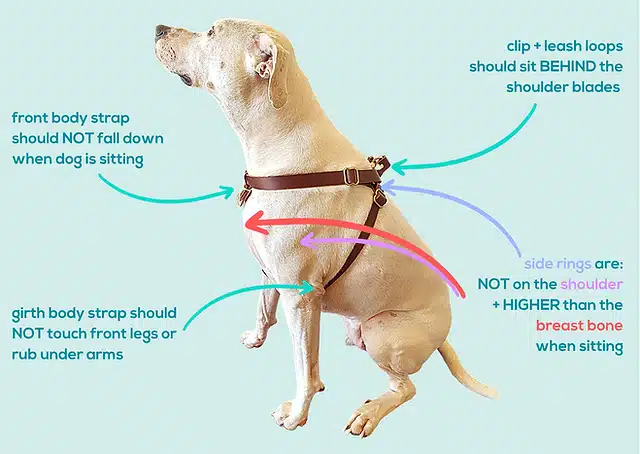
As mentioned above, a harness provides comfort and stability to your dog while moving or walking. Thus, we have mentioned below some key aspects of how a dog harness should fit.
- A dog harness should be fitted perfectly to allow for mobility and breathing. It should not be too tight or cause any chaffing or discomfort to your dog.
- The length of the harness is crucial. It should cover your dog’s back from the base of the neck to the base of the tail. If the harness is too short, it won’t distribute the force evenly. If it’s too long, it may not provide proper support.
- Many harnesses come with adjustable straps on the neck, chest, and sometimes the belly. These allow you to customize the fit to your dog’s specific measurement and adjust the straps to ensure a secure fit without excessive slack or pressure points.
- A well-fitted hardness should not have gaps or spaces between it and your dog’s body. Gaps can lead to rubbing or discomfort. It’s essential to check the harness so that it fits your dog’s body type and stays in place during movement.
- Your dog should have a full range of motion while wearing the harness. They should be able to walk, run, sit, and lie down comfortably without the harness restricting any movement. If the harness stops your dog’s ability to move naturally, it’s too tight.
- Pay close attention to areas where the harness might rub against your dog’s skin. Look for any chafing or irritation, such as redness or hair loss; if you notice these issues, re-adjust the harness or consider switching to a different style that fits better.
- Ensure that the leash attachment point on the harness is secure and does not cause any strain on your dog’s back. A properly fitted harness should distribute the force evenly across the chest and shoulders rather than pulling on the back or neck.
- As your dog grows or if they experience weight changes, revisit the fit of the harness. Ensure that it still meets all the criteria mentioned above. Monthly or weekly changes or checks will help maintain your dog’s comfort and safety.
Benefits of Dog Harnesses
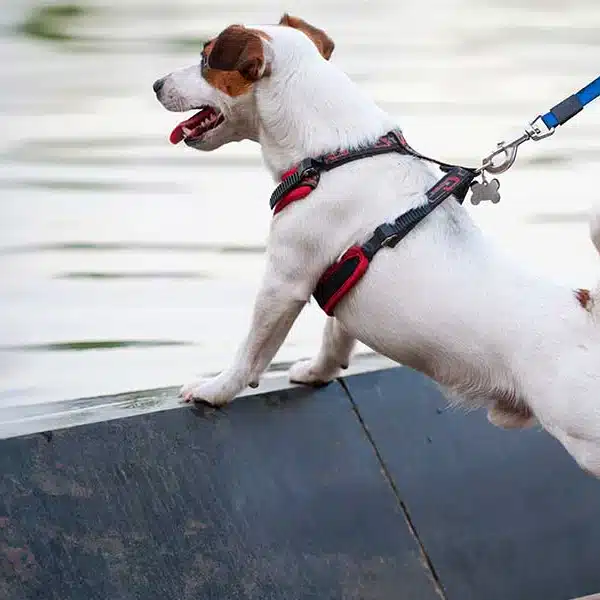
Dog harnesses have become a popular choice among pet owners for various reasons, and their benefits are more than just walking your dog. We have mentioned below several advantages of using a dog harness.
- One of the prime benefits of using a dog harness is the improved control that it provides during long walks.
- Collars can exert pressure on the dog’s neck and throat. However, harnesses distribute the force equally across the chest and shoulders.
- Collars can be risky, especially for dogs that pull on the leash. This behavior can lead to neck strain, tracheal injuries, or even choking. On the other hand, a harness eliminates these concerns by removing the pressure from the neck, protecting your dog’s delicate throat area.
- Harnesses discourage pulling behavior by providing a more balanced and comfortable restraint, making your dog less likely to pull.
- Harnesses also provide a secure way to restrain dogs during car rides. Some harnesses are designed to attach to seat belts, ensuring your dog stays safely seated during sudden stops or accidents.
- Properly feted harnesses are designed to be comfortable for dogs. They avoid the risk of chaffing or rubbing that usually comes with collars.
- Harnesses are particularly beneficial for dogs with respiratory issues as they avoid putting pressure on the neck or throat.
- Hardnesses are especially useful for dogs scared of wriggling out of collars.
- Many harnesses come with extra features, such as front-clip or back-clip attachments, which offer additional control and versatility. Front-clip harnesses can discourage pulling, while back-clip harnesses provide a more standard walking experience.
- Harnesses typically come with adjustable straps, allowing you to change the fitting according to your dog’s measurements. This adjustability is essential for growing puppies or dogs with changing body shapes.
- Dog harnesses can be beneficial for training. They provide a secure point for attaching training aids or leashes, making it easier to guide and teach your dog new commands and behavior.
Different Types of Harnesses
There are several types of dog harnesses available, each designed for specific purposes and tailored to different needs. Here are some of the most common types of harnesses.
1. Standard Harness
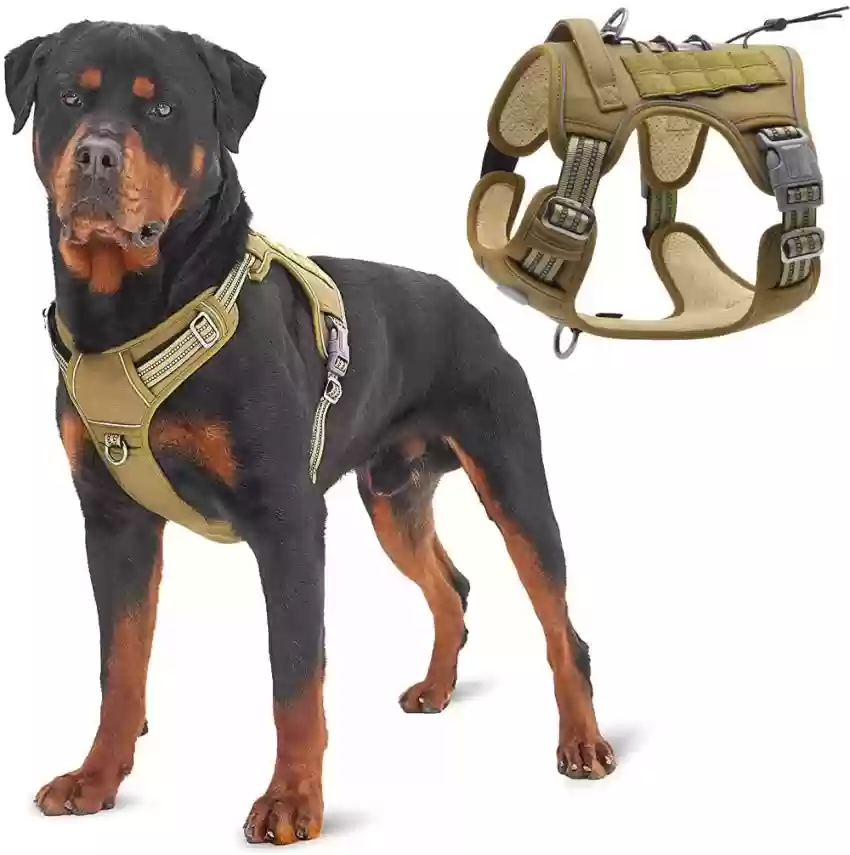
This is a basic harness used for regular walks and everyday use. It features straps around the dog’s neck and chest and typically has a back clip for attaching the leash.
2. Front-Clip Harness
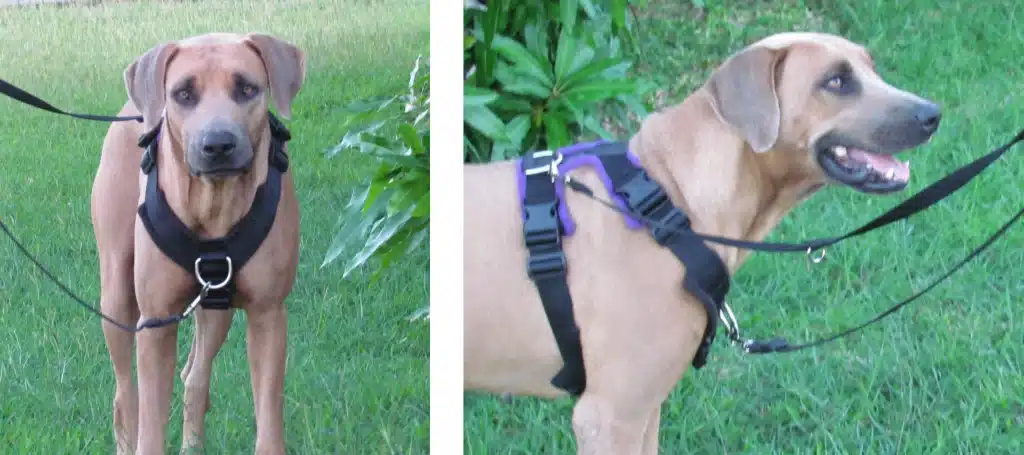
Front clip harnesses have the leash attachment point at the dog’s chest. This type of harness is often used for dogs that pull on the leash as it redirects their forward motion and discourages pulling.
3. Back-Clip Harness

In contrast to the front clip harness, back clip harnesses have the leash attachment point on the dog’s back. They are suitable for well-behaved dogs or those with no leash-pulling issues.
4. No-Pull Harness
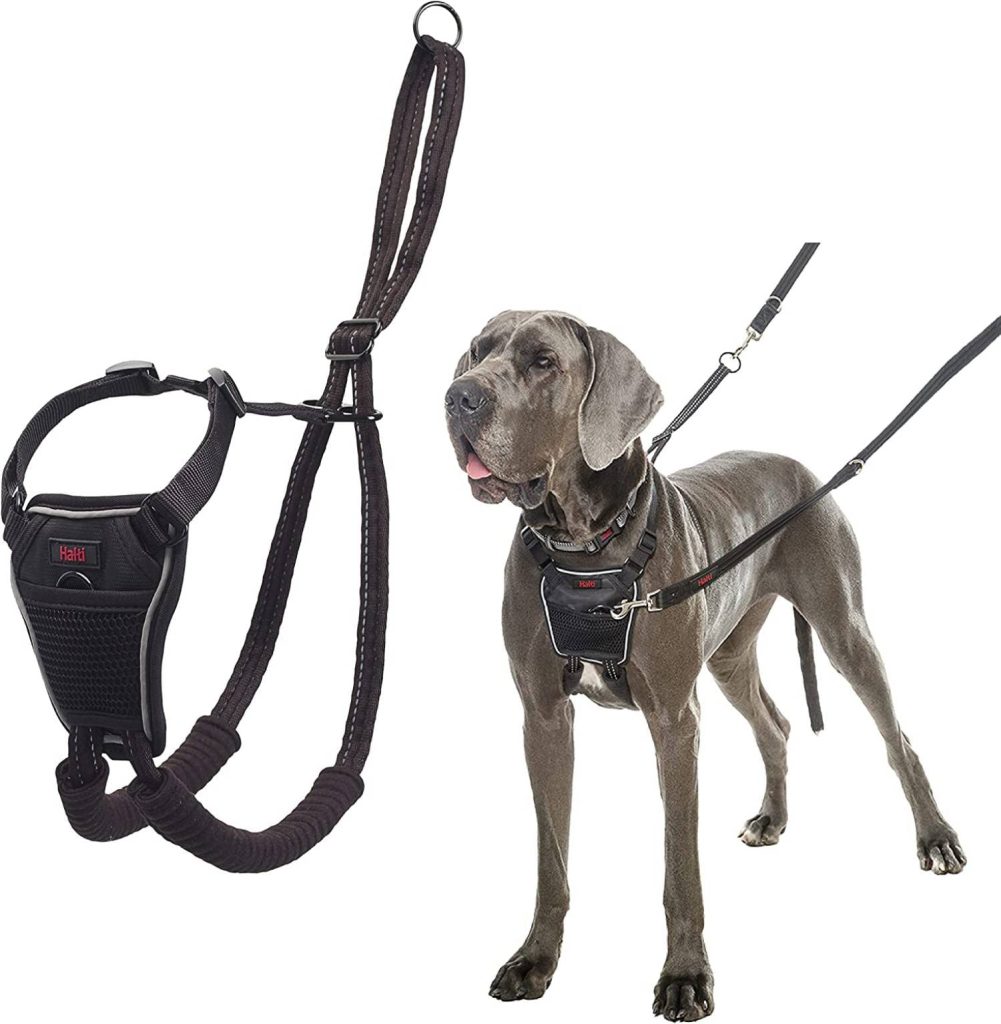
No-pull harnesses are designed to minimize or eliminate leash-pulling behavior. They typically have front and back attachment points, allowing you to choose the best option for your dog’s behavior.
5. Step-In Harness
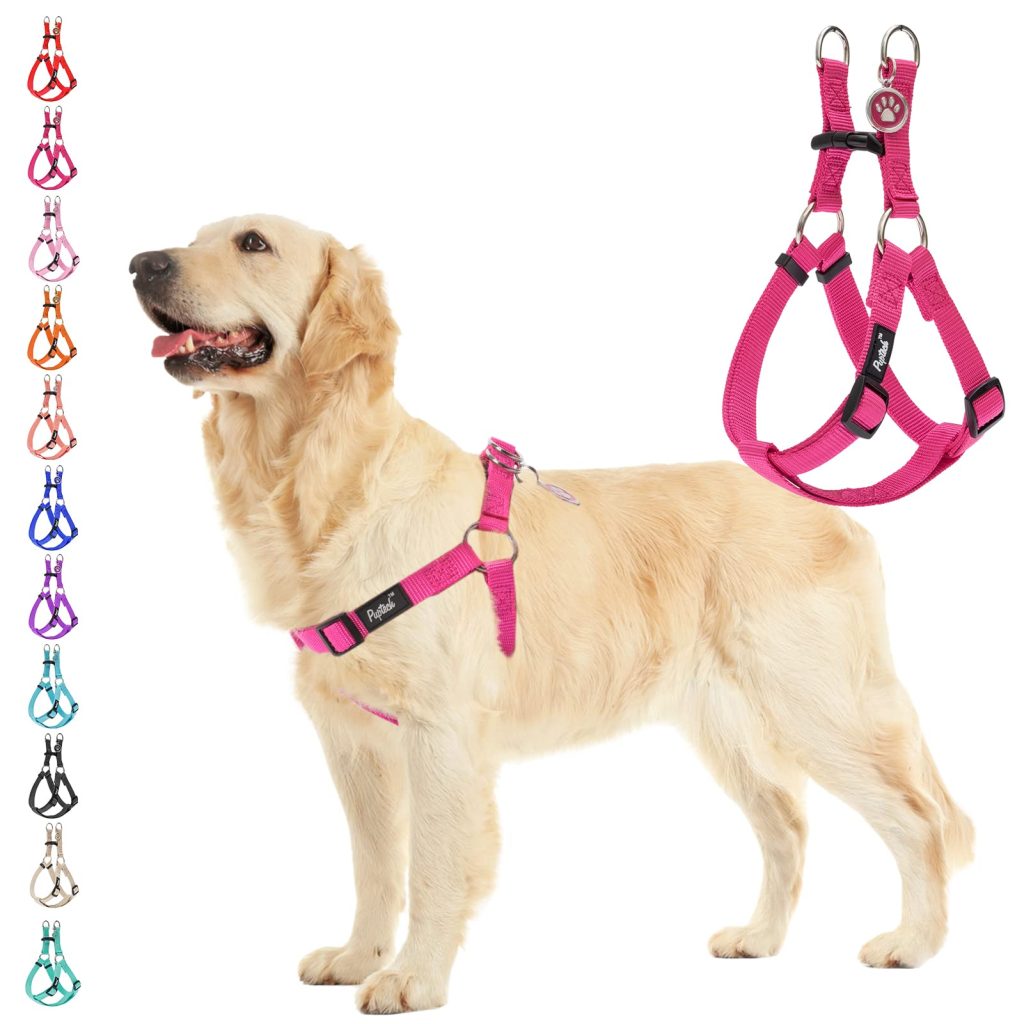
Step-in harnesses are put on by having the dog step into the harness and secure it around their body. They are often used for small dogs or dogs that resist having harnesses placed over their heads.
6. Vest Harness

Vest harnesses are typically padded and more comfortable for the dog. They provide additional support and distribute pressure evenly across the chest. These harnesses are suitable for dogs with neck or trachea issues.
7. Hiking or Adventure Harness

Design for outdoor enthusiasts and active dogs. These harnesses feature additional attachment points, reflective materials for visibility, and sometimes a handle for better control. They are ideal for hiking, running, or other outdoor activities.
8. Car Safety Harness
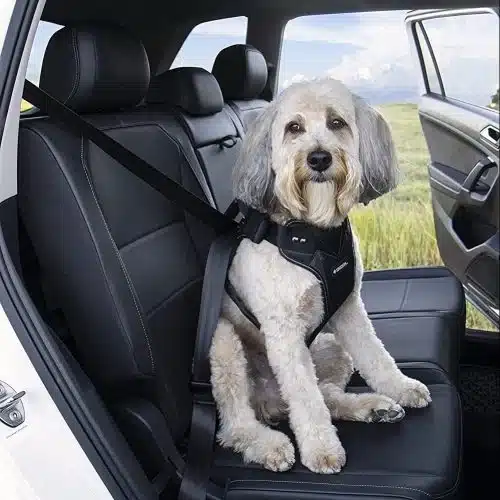
Car safety harnesses are designed to secure your dog during car rides, preventing them from moving around the vehicle and ensuring their safety in case of sudden stops or accidents. They often attach to seat belts.
9. Assistance or Mobility Harness
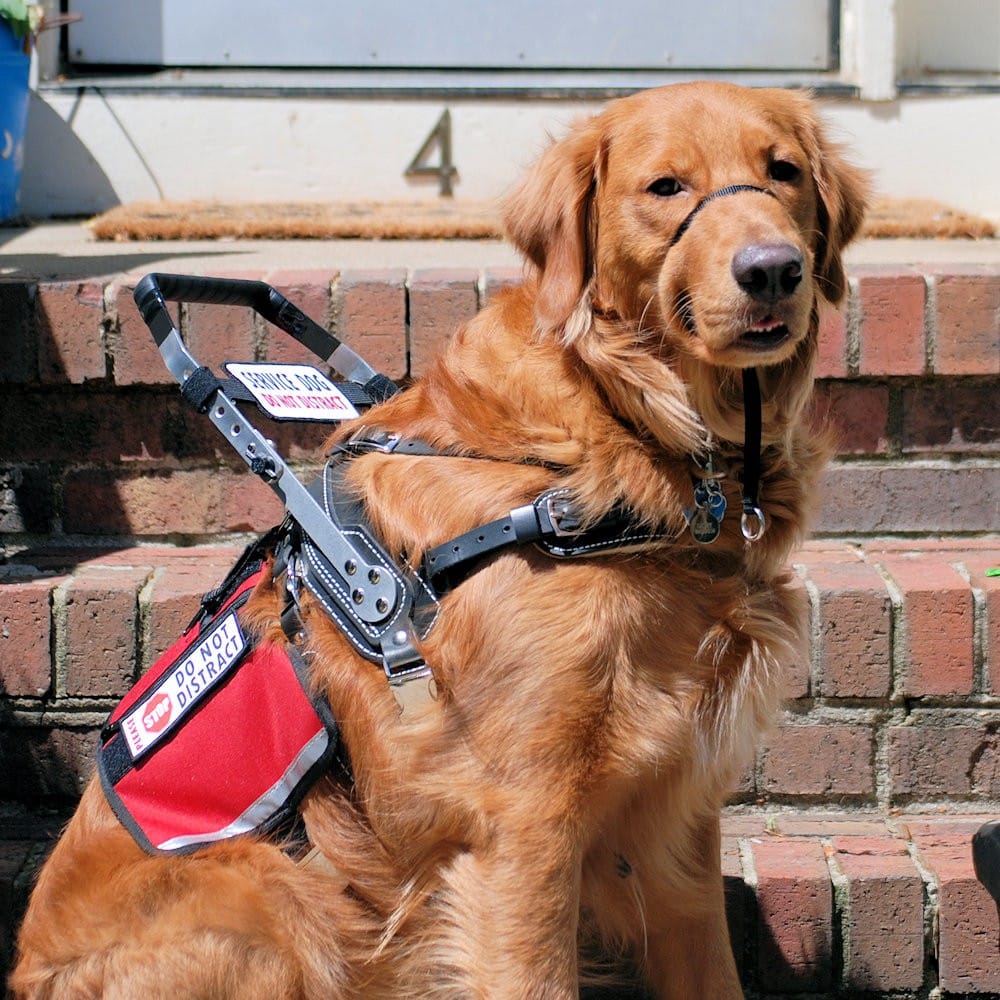
These harnesses are specially designed for dogs that require mobility assistance due to age, injury, or disability. They provide support for standing, walking, and climbing stairs.
10. Weight-Pulling Harness
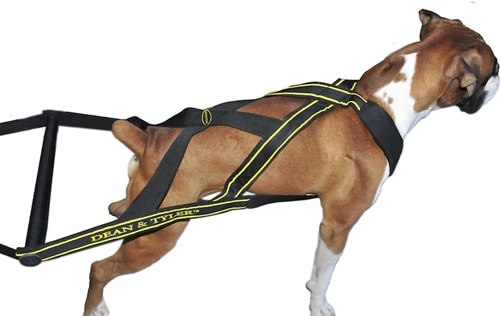
Designed for dog sports like weight pulling, these harnesses distribute the load evenly and provide a secure attachment point for pulling sleds, cards, or other items.
Conclusion
Measuring your dog for the perfect harness fit is a vital step in providing them with comfort and safety during walks; thus, it is necessary to learn how to measure a dog for a harness. Moreover, by accurately measuring your dog’s neck, girth, and chest girth and length and choosing a harness that suits their specific needs, you can ensure a secure, enjoyable experience for both of you while walking.
Properly fitted harnesses can contribute to better behavior, a healthier lifestyle, and a stronger bond between you and your dog. Once you know how to measure your dog for a harness, then choosing the right harness for your dog will not be a task. However, your dog’s comfort should be a priority.
Thus, it would help to choose a harness made up of comfortable and soft material that will avoid rubbing or causing irritation to your dog’s skin while walking.

